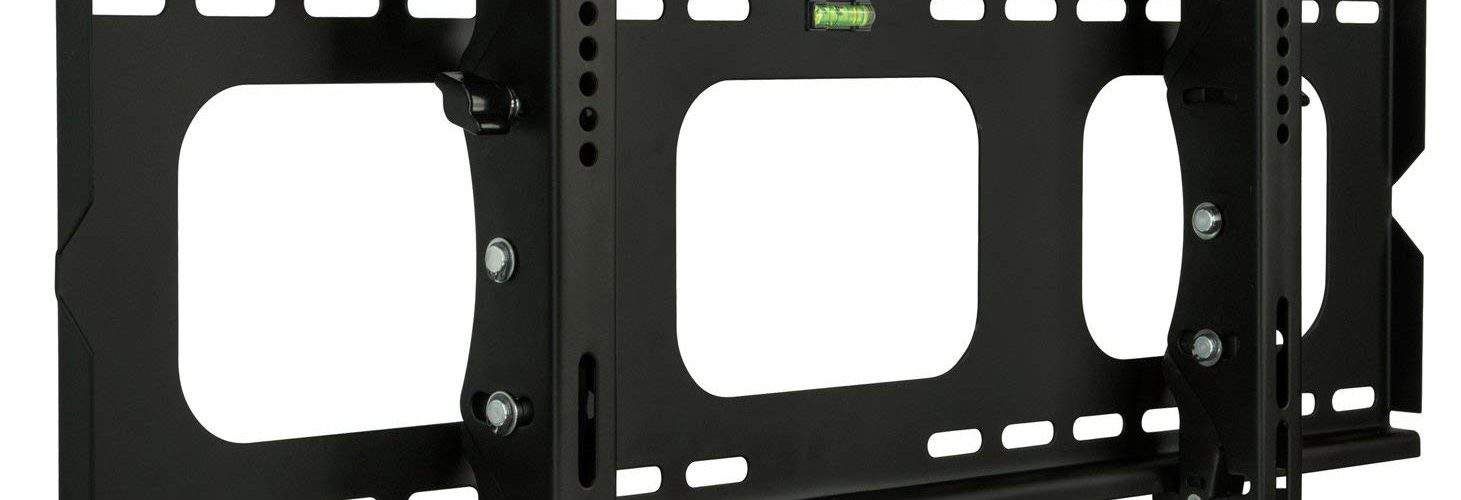Plasma TV mounting is a wonderful addition to any room. It frees up floor space, keeps the television away from kids and pets, and provides a better viewing experience. With the wide range of TV mounts and brackets available, you can mount your plasma television virtually any way and anywhere you want, all while staying within a budget. But before mounting your television on the wall, there are a few things you need to consider first.
There are 3 types of plasma TV wall mount brackets to choose from: low-profile, tilting and full-motion. Low-profile plasma TV ceiling mounts are the most basic of the three and also the least expensive. They are easy to install because low-profile mounts are stationary to the wall. Your plasma TV will be fixated on the mount, but will not be able to tilt or rotate. Although basic, low-profile plasma TV mounts are ideal for plasma televisions that are going to be in one location and will not be angled.
One step up is the tilting mount, which is just as easy to install as the low-profile mount. A plasma TV tilting mount has an additional feature in that it allows you to tilt a plasma TV in vertical angles, or up and down. This added perk gives you better viewing angles, especially while lying on a floor or when rearranging a room. These mounts cost slightly more, but can be worth the extra money.
The last and most versatile mount is the full-motion option, which allows you to essentially spin your plasma TV around in a full 360 degree circle. These mounts have a high price tag and are more difficult to install. After these barriers however, full-motion mounts are a great alternative for TV viewers because you can watch television from virtually any angle. Best of all, the TV is no longer the focal point of the room that all the furniture has to be arranged to.
Knowing what you’re looking for in your plasma TV mount is the first step, but installing one can be a bit trickier. Once again, low-profile and tilting mounts are quite easy to install and rival that of hanging a portrait. However, some mounts are more involved and there’s always the added burden of hooking up and tucking away the cables. Fortunately, as long as you’re confident in making small home improvements, plasma TV wall mounting should be no problem.
It’s all about location, and the same goes for your plasma television. Pick a good spot on the wall for your addition and consider the best viewing angles and whether you’re adding speakers or a shelving system. Also make sure that the mount you have chosen is VESA compatible. VESA, or Video Electronics Standards Association, ensures that the mount has standard measurements and is designed to be mounted. The only time this may be an issue is on older styles of mounts.
Mounting your plasma TV requires a few basic tools, including a tape measure, screwdriver, socket set, drill, and stud finder. If possible, use or purchase a stud finder that has built-in levels. Using the stud finder, locate the wall-studs that will help you position your TV. You need to use 2 wall studs to mount the weight of a plasma television, as well as 2 anchor bolts on each side, for a total of 4 anchors.
Now you will need to install the plasma TV mount brackets onto the back of the TV. This will also help you to visually see where your plasma TV will sit on the mount. After all, the mounting rails can shift the height of the display, causing your television to be higher than you may have planned. Also use this time to cut a hole or wall-box for the cable wires to run through. You can use a box-cutter for this and cut into the drywall. If you don’t want to add additional holes in the wall, consider using a cable plasma TV mounting bracket instead.
Now secure all 4 anchors using a socket-wrench. Be sure that you are mounting the anchor into a stud and not just the drywall, as this will not be strong enough to hold the TV. To help with this part, pre-drill pilot holes for the anchors to be secured into, since the bolts require a lot of pressure.
Before grabbing a friend or family member to help you lift your plasma television, take note of where all the inputs are on the back of the TV. This will avoid you having to blindly look for them when the TV has been mounted. You and your helper can each take one side and lift the plasma TV up, placing it on the mount. Tuck the cables in the right places and make sure that the safety tabs are locked. You have now successfully accomplished plasma TV mounting, hopefully with not too much of a fight!







